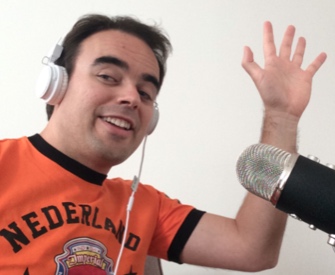Living in the Netherlands: Expats about nasty experiences in the Netherlands
CLICK HERE to subscribe to my Youtube channel
Are there any habits or things that you see Dutch people doing that in your country would be inappropriate? This was the question I asked people from all over the world.
Of course this depends on what you are used to. And ‘disgusting’ might be a big word. But still, let’s see what foreigners see as being disgusting Dutch things.
‘The Dutch lick their fingers after eating’
In some countries licking your fingers after eating food is considered rude or even disgusting. Here in the Netherlands it is something you shouldn’t do. But, still, it’s something that foreigners see more here than in other countries.
Maybe it has to do with the fact that the Dutch love simple food which they can eat ‘on the go’. Eating a boterham or fried food is always done with the fingers. Chances are high that some food will stay on the fingers.
Ever tried to eat a frietje and a frikandel speciaal without getting your fingers dirty? Congratulations, you’re the first!
Another explanation – a bit more cynical – is in combination with another typical Dutch trait, being economical. By licking your fingers you get everything you paid for. The physical equivalent of the flessenlikker!
‘The Dutch leave their shoes on all the time’
More weird than gross. Leaving your shoes on in the house. In a lot of countries, like Canada, it’s uncommon to leave your shoes on in the house. In the Netherlands a lot of people wear their shoes all the time.
‘The Dutch don’t wash their hands after going to the bathroom’
This quote is heard numerous times, you can also hear people say this in the video. And you might think that these are just some random experiences of foreigners in the Netherlands. But, according to some research, it is actually true! (1)
This research says that half of Dutch people do not wash their hands after going to the bathroom. On the other hand, the Bosnians are the cleanest Europeans.
Also it says that the Dutch generally have a reputation for order and cleanliness, but, as it turns out, that is largely undeserved. No other country in Europe does worse.
Okay, this is true. But we do have het washandje …
A ‘washandje’ ?
In this blog I talk about a typical Dutch item, the washandje. Something that is used in many Dutch households that is not really familiar in the rest of the world.
But also there are comments that a washandje is not really clean.
According to this research (2) washing yourself with your hands makes you just as clean as washing yourself with a washandje.
So it might feel cleaner to wash yourself with a washandje (and, yes, I can promise you it does feel cleaner) and the scrubbing does make your skin look smoother and healthier, but in fact, it’s not really healthier.
And to make things worse, the chances are high that your washandje is more dirty than your hands.
So experiences are that Dutch people are less hygienic. What for some countries might be strange is that there is no bidet in the bathroom. That brings me to an important subject here.
More disgusting habits and things in the Netherlands are about toilets
There are more things related to the bathroom that foreigners experience as disgusting. Let’s start with the first one. The toilet itself.
A typical Dutch toilet? – ‘De vlakspoeler’
The typical Dutch bowl has a unique shape which includes a sort of shelf, a little bit above the water level.
Or, as one of the students says in this video, ‘there’s an extra step, before the little pond at the bottom of your toilet’.
‘The Dutch have really public restrooms’
Foreigners find it at least a little bit strange that public restrooms are pretty public. For some it came as a surprise that it is really a stall (like the one for horses) with small doors where you can see a lot of things.
‘The Dutch pee very close to each other’
The plaskruis (pissoir) is also really popular in the Netherlands and is not used as much in other countries. It is a mobile urinal. Due to logistics, the crosses have the same dimensions as mobile toilet cabins and offer four urinals per unit. A pissoir is not connected to the sewer but has its own storage tank. When it is full, things might get dirty …
A pissoir is mainly known from festivals and events like King’s Day, but it is also used in certain cities to prevent urinating outside during nightlife.
It’s almost a public thing what you do in the toilet and how you do it.
‘The Dutch say exactly what they are going to do’
Sitting at a dinner party, talking about … whatever. Someone might just stand up and say that he has to go to the toilet.
- ‘Ik ga even naar de wc’
In most countries it’s common to say that you have to leave for a second. Or to use a euphemism, that is a figure of speech that presents something as more beautiful, friendlier or less unpleasant than it really is.
But it can get even worse. Dutch people might just tell you exactly what they are going to do.
- ‘Ik moet plassen’
- ‘Ik ga even poepen’
These are examples of the Dutch being direct and honest.
Disgusting food
When Dutch people make a Dutch boterham met pindakaas.
What’s not uncommon for them to do is to dip the knife in the butter, because you need first to put the butter on the bread, and, with the same knife, put the peanut butter on the bread. There are even people, and not just a few, who lick the knife in between!
Vocabulary
- Boeren – To burp
- Scheten – to fart
- De scheet – the fart
- De wind – the fart
- De ruft – the fart
- In je neus peuteren – picking your noose
- Snot – snot
- Snot opeten – eating snot
- Niezen (zonder hand voor je mond) – to sneeze without your hand in front of your mouth
- Hoesten – cough
- Overgeven – vomit
(1) https://bigthink.com/strange-maps/revealed-dutch-are-least-hygienic-europeans
(2) https://www.quest.nl/mens/lifestyle/a30295203/hygiene-wassen-washandje-handen/

Bart de Pau
online Dutch teacher & founder of the Dutch Summer School & Dutch Winter School


